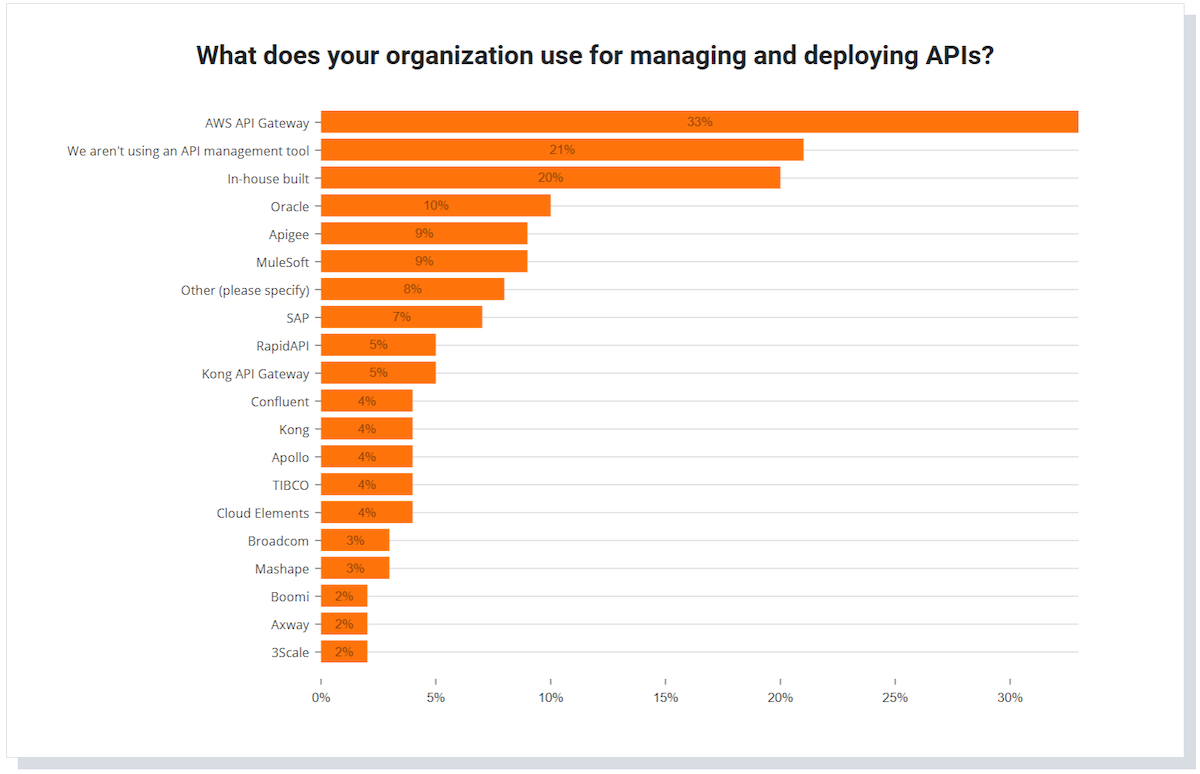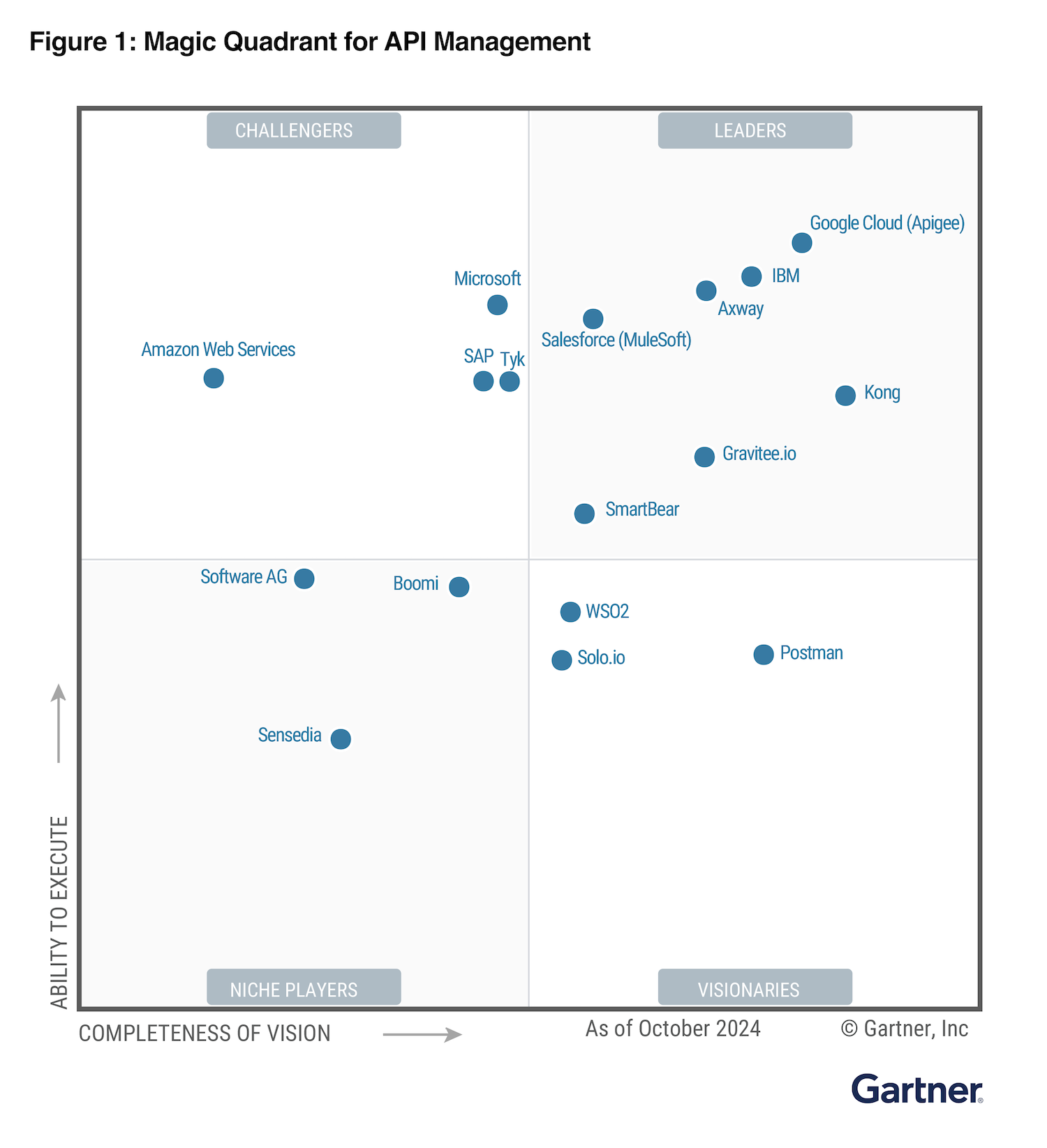Federating API Quality Across Bundling Cycles
Over the last decade, many IT leaders have felt confident they were ready for the API evolution. Afterall, they invested a lot into it. Traditional API management platforms promised to deliver on transformational challenges, and offer cornerstone capabilities – API cataloguing, specification support, authentication, authorization permissions, security, policy management, and even developer portals. However, traditional API management approaches never guaranteed readiness for the API future, and certainly does not guarantee that APIs will be delivered consistently to a high quality.
Naturally, those embedding initial iterations of API management tooling benefitted from levels of consistency and governance within their API program (albeit relatively late in the delivery cycle). However, in many cases, the traditional gateway-skewed platforms (often now called “Gatewaysaurus”) merely replaced legacy integration message brokers or service buses, with a stamp of being “API-ified” by ticking the box on certain fundamental capabilities needed to scale.
The reality is that many companies require much more specialised offerings across the API lifecycle to equip their teams with the tooling and supports needed to foster qualitative practices across an increasingly diversity set of API styles, domains, and unique challenges. The hope is that this will ultimately lead to better outcomes for the investments made by introducing niche tooling from various vendors for discrete lifecycle stage activities. This trend has led to the recent phenomenon of the “great unbundling of API management” coined by Erik Wilde and often referenced by Mark O’Neill when providing valuable perspectives on the recent history and evolution of the API gateway landscape.
Another interesting data point that our studies have shown is that a surprising percentage (41%) of companies are either not using an API gateway or have chosen to create their own. It’s not trivial to pinpoint exactly the reason for this, but most likely hints toward the increasing challenges faced by teams trying to deliver quality APIs pitted against the increasing pressure to increase delivery speed and velocity. Something must give and often it’s the tooling and education needed to ensure robust longevity rather than short term delivery goals. Unfortunately, the result is often more time spent in support and quality remediation down the road. Ultimately this has the opposite net effect than what was intended at the outset.

Figure 1 – SmartBear State of Software Quality | API Report
At SmartBear, we’ve always believed in the democratisation of APIs, the need for collaboration across business and technology domains, and the importance of the diverse skillsets required to deliver quality APIs. There should never be a trade-off between productivity, speed, and quality. And with that, our tools have predominately focused on niches which are exercised earlier in the lifecycle.
SmartBear is focused on providing better choice, interoperability, and resiliency for end users. How are we doing this?
- We’re advocates for being able to promote quality-orientated practices earlier in the cycle when it’s cheaper and easier to do so (a.k.a. shifting-left).
- We continue to put an emphasis on the importance of industry standards and specifications and participate with the communities responsible.
- We’ve been participating significantly with projects like the OpenAPI Initiative and helping to bring about the release of the Arazzo Specification.
- More importantly, this is not just lip service, we invest in building on top of standards within our tools to improve interoperability and participation.
- First and foremost, this benefits our own products allowing the ability for us to deliver integrated and context aware experiences for our customers
- Secondly, it allows us to integrate with the broad spectrum of API tooling that makes up the landscape for most platform engineering teams.
Effectively, we’ve brought those specialized capabilities across design, test, documentation, and governance ability across a broad berth of API specifications and protocols to companies regardless of their gateway or runtime topologies (on-premise, cloud, multi-cloud, or hybrid-cloud). This does not happen in a vacuum; we endeavour to take the collective experiences of our 16+ million users and aim to equip the next wave of advocates for a better-quality software future.
We feel this unique ability has seen SmartBear named a Leader in the 2024 Gartner Magic Quadrant™ for API Management!

From Niche Player to Visionary to Leader
We’ve been on a journey over the last few years, which has seen SmartBear move from a ‘Niche’ player in 2021, to a ‘Visionary’ in 2023, and now positioned as a Leader in 2024.
We believe there are many factors to consider when looking at our trajectory, I hesitate to draft an explicit repeatable recipe but there are some standouts ingredients for me.
- The ability to cater to both technical and non-technical stakeholders across the API lifecycle
- Front-load collaboration into early delivery stages
- Offer different consumption modes (UI, CLI, API), prioritize API quality through governance and specifications
- Maintain a commitment to comprehensive API testing
- Support customers in improving the quality and consistency of their API documentation.
The focus remains on improving the developer experience of our users, and ultimately empowering them to improve the developer (or end user) experience of the software they build or manage with our offerings.
There are also many vectors in how we deliver upon what I’ve listed above, which mix our approaches to open source, our commitment to building organic products to tackle specialist problems, and our astute acquisition of products and talents to helps us become better (namely PactFlow and Stoplight within our API business). Combined, these strengthen our ability to provide innovation across the SDLC and improve the journeys of our customers as they grow.
Bundling, Unbundling, and the Future
It’s not all down to us either! There are macro factors also at play. The API landscape is getting more diverse and complex, leading to the current “unbundling” trend that I mentioned earlier. But this is just a cycle, and more often than not we’re in a cycle moving towards centralization or decentralization. In relation to the two ways to be successful as a product organization, former Netscape CEO, Jim Barksdale, explains, “One is to bundle, and the other is to unbundle.”
So, whilst we are in the “unbundling” peak of the cycle now, we can already see from an API federation perspective (within organizations dealing with large API programs), the need to have some form of control planes giving centralization of governance and unified cataloging (or registries), while still giving distributed benefits and freedoms to various teams therein.
The reclassification is also likely top of mind for industry analysts, and I would predict some fluctuation to happen within the various category groups soon to match reclassifications of the happening trends.
This is completely natural, the landscape evolves, and patterns shift to deal with the challenges and complexities. This ebb and flow will continue to exist and it’s what we also bake into our future strategy from a SmartBear perspective. We’re bringing SmartBear API Hub to market – which will consolidate some of our popular specialist offerings, allowing our customers to streamline their workflows (both technical and procurement) while still ensuring that we’re open, modular, and composable enough to ride the bundling and unbundling waves into the future.
It’s an exciting time ahead in the API space, come journey with us!
Access the full Gartner Magic Quadrant report here to explore the complete analysis of the API management market and see how we believe SmartBear is at the forefront empowering developers and businesses alike.
Gartner does not endorse any vendor, product or service depicted in its research publications and does not advise technology users to select only those vendors with the highest ratings or other designation. Gartner research publications consist of the opinions of Gartner’s research organization and should not be construed as statements of fact. Gartner disclaims all warranties, expressed or implied, with respect to this research, including any warranties of merchantability or fitness for a particular purpose.
GARTNER is a registered trademark and service mark of Gartner and Magic Quadrant is a registered trademark of Gartner, Inc. and/or its affiliates in the U.S. and internationally and are used herein with permission. All rights reserved.
This graphic was published by Gartner, Inc. as part of a larger research document and should be evaluated in the context of the entire document. The Gartner document is available upon request from SmartBear.